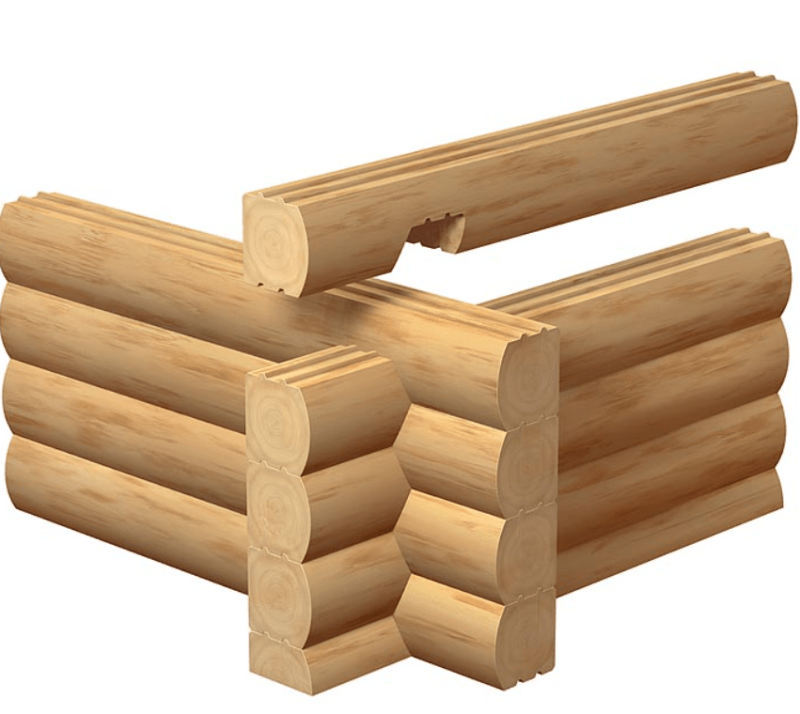JeffCastillo
Structural
Hello:
I am engineering a log cabin in Utah, 80 design snow load for roof; I am trying to determine how I can calculate for (2-3) Stacked Logs on top of each other to act as a "Header" or "Beam". It is a side ridge for a porch, 12' span and 2' overhang, I am trying to use Western Woods Wall Log 40 and the technical data sheet from Timber Products Inspection May 2020. We are using a program called Beamchek to check if the values inputted passes or fails, but I have no way of inputting stacked courses or anything like that. I am just trying to determine how I can get (2) 12" diameter WW WL 40 to work as I can get a 12" Diameter DF Select to pass, but I have no way of showing the math as to how I can get (2 or 3) Stacked courses to pass and was wondering if anyone could help?
Here is my thought process, I know for beams/headers, we can call out 2 or 3 ply beams that are nailed together and become stronger as their moment of inertia increases, allowing the deflection to become less, and the Section modulus to help with the moment, so if I am thinking correctly, can I treat the Section Modulus for a round log as the courses (so in place of a single 12" diameter, having (2) courses would be 24" diameter), increasing the strength of (2 or 3 stacked logs)?
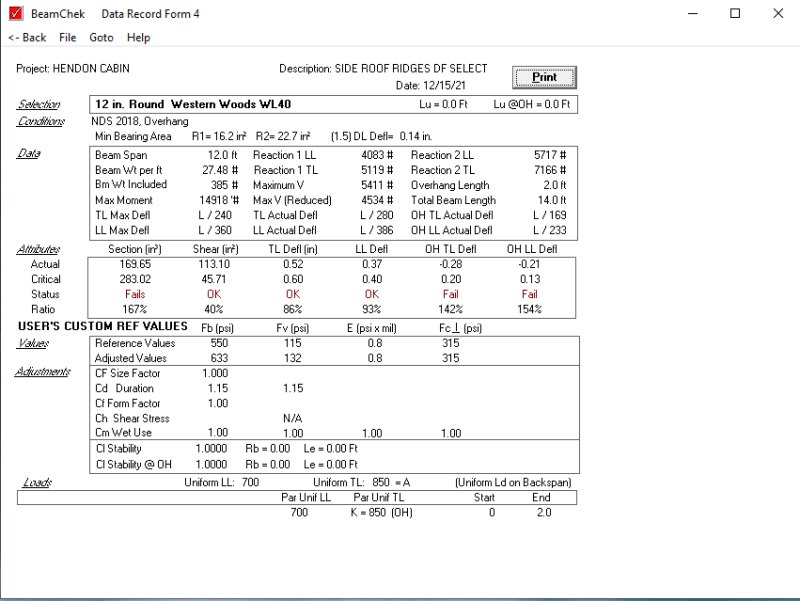
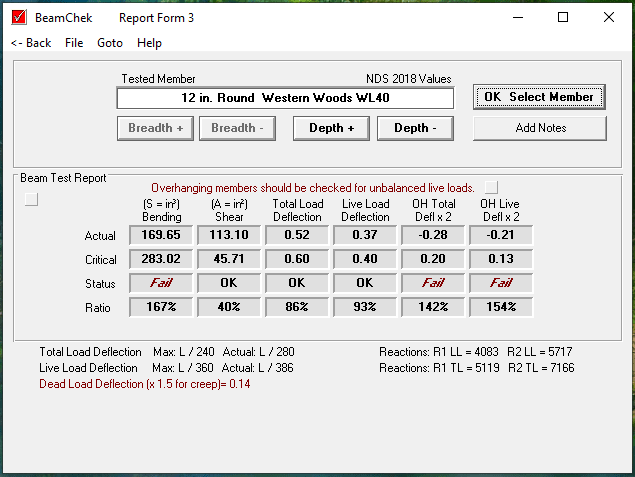
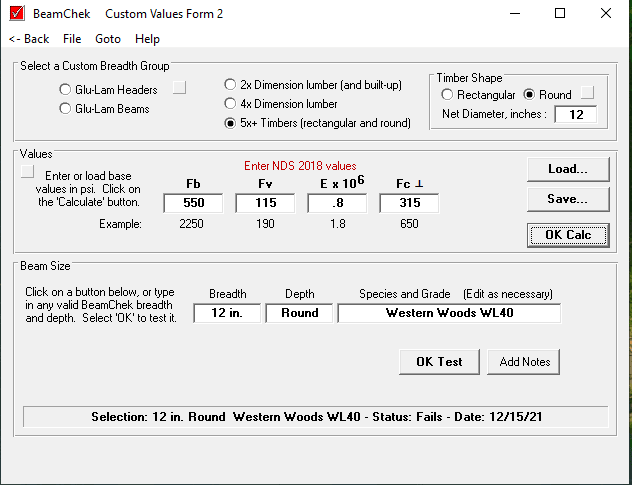
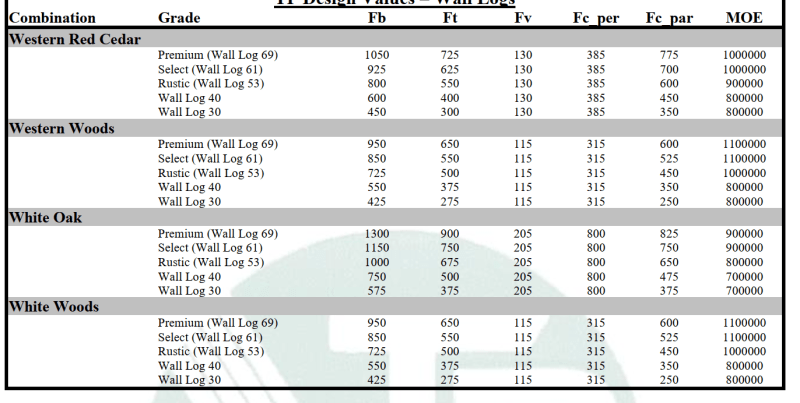
I am engineering a log cabin in Utah, 80 design snow load for roof; I am trying to determine how I can calculate for (2-3) Stacked Logs on top of each other to act as a "Header" or "Beam". It is a side ridge for a porch, 12' span and 2' overhang, I am trying to use Western Woods Wall Log 40 and the technical data sheet from Timber Products Inspection May 2020. We are using a program called Beamchek to check if the values inputted passes or fails, but I have no way of inputting stacked courses or anything like that. I am just trying to determine how I can get (2) 12" diameter WW WL 40 to work as I can get a 12" Diameter DF Select to pass, but I have no way of showing the math as to how I can get (2 or 3) Stacked courses to pass and was wondering if anyone could help?
Here is my thought process, I know for beams/headers, we can call out 2 or 3 ply beams that are nailed together and become stronger as their moment of inertia increases, allowing the deflection to become less, and the Section modulus to help with the moment, so if I am thinking correctly, can I treat the Section Modulus for a round log as the courses (so in place of a single 12" diameter, having (2) courses would be 24" diameter), increasing the strength of (2 or 3 stacked logs)?





